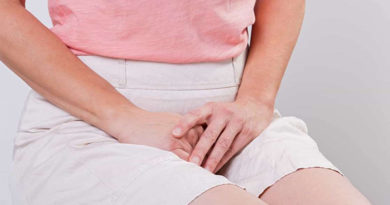Remedies to Relieve Bacterial Vaginosis
Bacterial vaginosis, also known as vaginal bacteriosis, is a kind of infection of the vagina caused by a bacterium. This kind of infection is most common in women around the age of 14-49 years and is most commonly associated with sexually active women.
Women with this type of infection may experience vaginal discomfort or foul odor coming from their vaginas. However, this might not always be the case, as other women may have no apparent symptoms of BV.

Bacterial vaginosis is not a sexually transmitted infection (STI), but it does increase the risk of contracting STIs.
An individual is at particular risk of getting bacterial vaginosis for the first time when they engage in sexual intercourse with new partners. In addition, engaging in unprotected sexual activities can lead to the development of bacterial vaginosis.
During unprotected sex, the vagina is at risk of the introduction of new, harmful bacteria, which can lead to bacterial vaginosis.
Some women may suffer from recurring bouts of bacterial vaginosis even after treatment activities – the reason why it keeps on recurring might be because of having sexual intercourse with the same person.
Tips for dealing with bacterial vaginosis
1. Avoid using scented products for cleaning your vagina
There is a misconception that the foul odor that results from bacterial vaginosis infection results from a low level of hygiene. As a result, individuals end up cleaning with the use of scented products. However, this is often counterproductive.
It is essential to know that the vagina is a self-cleaning organ. Thereby the use of soaps, douches, and even scented products is not necessary. This is because they tamper with the normal vaginal pH. When the pH level is altered, the chances of being exposed to bacterial vaginosis increase.
Always use clean water to wash the vagina, and at the vulva, it is recommended to use unperfumed soaps.
2. Change underwear more frequently
Can a female get bacterial vaginosis from another female who is infected when they share a swimming pool? No, it cannot be transmitted. The only thing that one needs to look out for is the chlorine used in treating the pool.
This chemical typically causes itching around the vaginal area immediately after swimming. Due to the warm temperature of your body, it becomes the perfect condition to favor bacterial growth.
That is why it’s recommended to take off your attire after swimming, followed by a quick shower, mainly to clean your vaginal area and change clothes. It is recommended to have several pairs of internal wear and swimming attire.
3. Practice changing of pads and tampons
Hygienically it is recommended to frequently change your pads and tampons when you are on your monthly period. The change should be in between the interval of 3-5 hours. Failing this, you will be exposing your vagina to possible yeast infection and bacterial vaginosis.
Additionally, one should normalize the use of pads instead of tampons. Tampons are known to interfere with the innate nature of vaginal bacteria. If you must use tampons, then ensure they are not scented ones.
4. Continuous use of probiotics
In the body, probiotics play a vital role in the growth of more helpful bacteria required by the vagina – this beneficial bacteria aids in the removal of harmful bacterial.
It is advisable to develop the habit of using natural probiotics only as these have higher chances of aiding the good bacteria in ensuring that the vagina is healthy and free from infection.
Below are some of the recommended probiotics.
- Cottage cheese
- Yogurt
- Fermented foods
In some women, bacterial vaginosis can cause severe pain. One way to combat this is by using cooled probiotic tampons. This is done by just freezing yogurt inside a tampon applicator. Remember, the yogurt should not be of any flavor.
The cooling effect will slowly relieve you from the pain, and the probiotics will deal with the infection itself.



